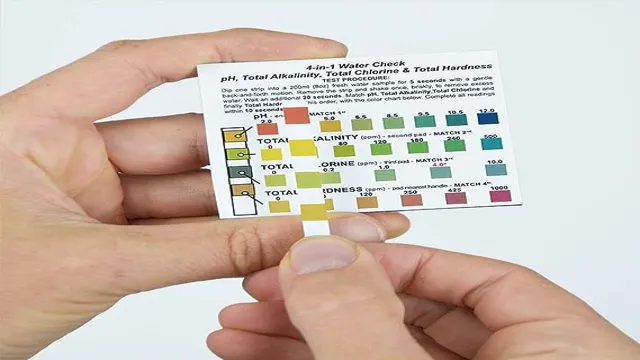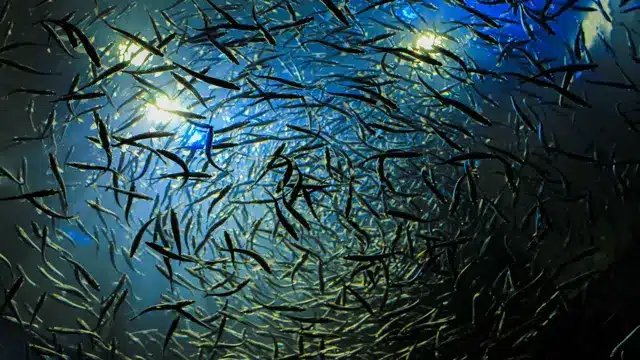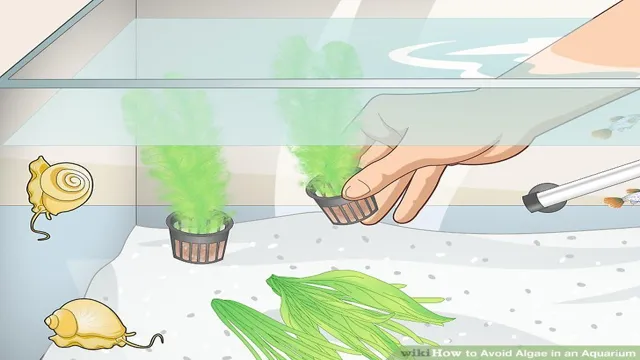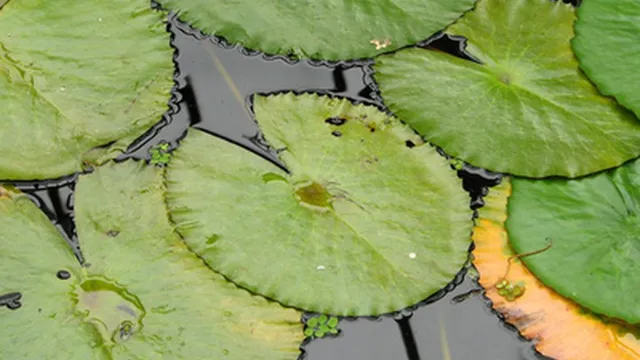As an aquarium owner, you may be aware of the importance of maintaining the right water parameters for the health and well-being of your aquatic pets. One of these parameters is water hardness, which refers to the concentration of dissolved minerals in the water. High levels of hardness can have negative effects on your fish, plants, and equipment.
If you’re noticing issues with your aquarium, such as cloudy water, algae growth, or poor fish health, it may be due to elevated hardness levels. Fortunately, by understanding how to lower total hardness in your aquarium, you can help create a safer and more comfortable environment for your aquatic friends. In this guide, we’ll look at several effective methods for reducing hardness levels in your aquarium, from using distilled water and adding natural substances to using commercial treatments.
By the end of this article, you’ll have a better understanding of how to maintain optimal water hardness in your aquarium and keep your fish and plants thriving.
Understanding Total Hardness
Total hardness is a crucial element to understand when it comes to maintaining a healthy aquarium. Hardness refers to the amount of minerals and dissolved solids in the water. Total hardness encompasses both temporary and permanent hardness and is measured in parts per million (ppm).
High levels of total hardness can lead to alkaline water and create a challenging environment for fish and other aquatic life. To lower total hardness in aquariums, some hobbyists may opt to use reverse osmosis (RO) water or add certain chemicals such as aquarium salt or acid-based products. However, it is important to note that sudden changes in water chemistry can also be harmful to aquatic life, so it is best to proceed with caution and gradually adjust water parameters.
Regular water testing and monitoring are also essential for maintaining healthy aquariums.
What is Total Hardness?
Total hardness is a term used to measure the amount of minerals present in water. These minerals, like calcium and magnesium, can create problems when they build up in pipes or household appliances, causing damage or reduced efficiency. Measured as parts per million (ppm), total hardness can be classified as either temporary or permanent hardness.
Temporary hardness is caused by the presence of bicarbonates that can be removed by boiling water, whereas permanent hardness is caused by the presence of sulfates and chlorides that cannot be removed by boiling. Understanding the total hardness of your water is important for maintaining the health and longevity of your appliances and ensuring the water you consume is safe and healthy.

Why is it Important to Lower Total Hardness in Aquariums?
Total hardness is an important factor in aquariums that often gets overlooked. This refers to the measure of minerals such as calcium and magnesium in the water, which can impact the health of fish and plants. High levels of total hardness can lead to issues like scaling on equipment and reduced water quality.
In some cases, it can even result in harm to fish and invertebrates. That’s why it’s crucial to keep total hardness at a healthy level by using specialized water treatments or choosing species that can tolerate harder water. By understanding and managing total hardness, aquarium enthusiasts can create a thriving environment for aquatic life to flourish in.
Methods for Lowering Total Hardness
If you’re looking for ways on how to lower total hardness in your aquarium, you’re not alone. High levels of total hardness can make it difficult for certain plants and aquatic animals to thrive, so it’s important to balance the levels. One way to lower total hardness is through dilution. (See Also: How to Get to Sydney Aquarium from Central: Easy Guide for Visitors)
This means slowly adding soft water to your aquarium until the hardness levels drop to your desired range. Another method is to use certain types of filtration systems, such as reverse osmosis units, that can remove heavy minerals and salts from the water. Adding organic acids, like tannins from driftwood or peat moss, can also help to lower hardness levels.
However, it’s important to note that these methods must be used with caution as sudden changes in water chemistry can be harmful to your aquatic pets. Always test your water regularly and make changes slowly and gradually to prevent any harm.
Method 1: Dilution with Soft Water
One of the methods to lower total hardness in water is through dilution with soft water. This means mixing the hard water with soft water to decrease the concentration of minerals that cause hardness. Soft water has a low concentration of calcium and magnesium ions and can be obtained through reverse osmosis, ion exchange, or distillation processes.
Dilution is a simple and effective method, but it may not be suitable for all situations, especially if a specific level of mineral content is required for certain applications. It is also important to note that the dilution ratio should be calculated properly to ensure the desired hardness level is achieved. If too much soft water is added, it may result in excessive softening, which is not always desirable.
Dilution with soft water is a cost-effective and natural way to lower total hardness and improve the quality of water.
Method 2: Reverse Osmosis
When it comes to lowering the total hardness of water, reverse osmosis is another great method to consider. This process involves pushing water through a semi-permeable membrane to remove minerals and impurities. The resulting water is softer and more ideal for drinking, cooking, and other household uses.
Additionally, reverse osmosis systems are typically easy to install and maintain, and they require no chemicals or extra gadgets. One thing to note is that reverse osmosis may not be the best solution for those with high levels of hardness in their water. In these cases, other methods such as ion exchange or distillation may be more effective.
However, for moderate levels of hardness, reverse osmosis can be a great option for enjoying clean, soft water.
Method 3: Adding a Cation Exchange Resin
If you’re looking to lower the total hardness in your water, one method to consider is using a cation exchange resin. This is a type of resin that’s designed to remove metal cations, such as calcium and magnesium ions, from water. The resin works by having an electrical charge that attracts the positively charged metal ions and exchanges them with hydrogen ions.
The hydrogen ions are then released into the water, effectively lowering the water’s total hardness. Cation exchange resins can come in various forms such as beads, granules, or pellets and do require some maintenance such as backwashing and periodic regeneration. However, it is a relatively cost-effective method that can be used for both household and industrial applications.
It is especially useful for areas with hard water problems, where the presence of excess calcium and magnesium ions can cause issues such as scale buildup, soap scum, and poor lathering. Overall, using a cation exchange resin can be an effective method for lowering total hardness. It’s important to note that this method is ideal for removing calcium and magnesium ions, so if your water contains other types of contaminants, additional methods may be necessary. (See Also: How to Clean Aquarium Sand Substrate: Step-by-Step Guide for Better Fish Health)
Maintenance is also crucial to keep the resin functioning properly and efficiently. By incorporating a cation exchange resin into your water treatment plan, you can enjoy cleaner, better-tasting water that’s free from the negative effects of total hardness.
Maintaining Ideal Total Hardness
If you’re experiencing high levels of total hardness in your aquarium, there are a few ways to bring it down to ideal levels. One way is to use distilled or RO water when doing water changes. This water has little to no minerals, which can help to lower the overall hardness of the aquarium.
Another option is to add an ion exchange resin, which works by exchanging the hard ions with softer ones. This method can be more expensive and requires monitoring to ensure the resin doesn’t become exhausted. Lastly, you can use chemical additives designed to lower the hardness of the water.
These additives work by binding to the excess minerals, making them easier to remove through filtration. Remember, it’s important to maintain ideal total hardness levels in your aquarium to ensure the health and well-being of your aquatic pets. By following these methods, you can lower the hardness and create a safe, healthy environment for your fish.
Testing Total Hardness
Maintaining ideal total hardness in your aquarium is crucial for the overall health of your fish. Total hardness is a measure of the concentration of dissolved minerals like calcium and magnesium in the water. It’s important to regularly test the water to ensure the total hardness is within the optimal range for your fish species.
If the water is too hard, it can lead to the formation of calcified deposits on the aquarium equipment, while water that is too soft can cause stress to the fish and hinder their growth. Investing in a high-quality water testing kit will help you keep track of your aquarium’s water parameters and ensure that your fish thrive in their environment. Remember, keeping a close eye on total hardness is just one of the many steps you can take to maintain a healthy, balanced aquarium ecosystem.
Adjusting Total Hardness with Additives
Adjusting Total Hardness with Additives Maintaining the ideal total hardness levels in your water is essential to ensure the longevity and performance of your plumbing systems, appliances, and even your skin. Total hardness refers to the concentration of minerals like calcium and magnesium in your water. High levels of total hardness can lead to limescale buildup, corrosion, and reduced efficiency of your appliances.
Fortunately, there are various additives you can use to adjust the total hardness levels in your water. For instance, water softeners remove the minerals from your water by replacing them with sodium ions. You can also use chelating agents like EDTA, which bind with the minerals in your water and prevent them from reacting with other elements.
If you’re looking for a more natural option, citrus-based cleaners can also help remove limescale buildup and reduce the overall total hardness levels in your water. Ultimately, the choice of additive will depend on your specific needs and the composition of your water. Consulting with a professional can help you determine the ideal treatment for your water system.
Conclusion and Final Thoughts
In conclusion, reducing the total hardness in your aquarium requires a little bit of science and a lot of dedication. By testing and monitoring your water parameters, using appropriate filtration systems, and making mindful decisions about the type of decorations and substrates you use, you can create a healthier and happier environment for your aquatic pets. With less hardness comes a softer, more serene aquarium experience – and who wouldn’t want that? So, get testing and get tweaking, because when it comes to lowering total hardness, there’s no time to be hard-headed!” (See Also: How to Lower Magnesium Levels in Aquarium: A Step-by-Step Guide)
FAQs
What is total hardness in aquariums and why is it important to control?
Total hardness in aquariums refers to the amount of dissolved minerals, such as calcium and magnesium, in the water. It is important to control because high levels can stress fish and other aquatic life, leading to health problems and even death.
How can I test for total hardness in my aquarium?
You can use a water testing kit specifically designed for aquariums. These kits measure the levels of various minerals in the water, including calcium and magnesium, which help determine the total hardness.
What causes total hardness to increase in aquariums?
Total hardness can increase due to factors such as the addition of tap water, the use of certain types of substrates or decorations, and the presence of limestone or other mineral-rich rocks in the tank.
Can high total hardness be adjusted without completely changing the water in my aquarium?
Yes, there are several methods for lowering total hardness, including using special water treatment products, adding reverse osmosis or deionized water to the tank, and using peat moss or driftwood to help lower mineral content.
How do I know if my fish are being negatively affected by high total hardness?
Symptoms of stress or illness in fish, such as lethargy, loss of appetite, and unusual swimming behavior, can indicate that high total hardness is causing problems. In extreme cases, high total hardness can also lead to physical problems like fin rot or swim bladder issues.
Are there any types of fish or other aquatic life that are particularly sensitive to high total hardness?
Yes, certain species, such as neon tetras, can be extremely sensitive to high mineral content in the water. It is important to research the specific needs of any fish or other aquatic life you plan to keep in order to provide them with the proper water conditions.
Can I use distilled water to lower total hardness in my aquarium?
While distilled water has low mineral content, it is not recommended to use as the sole water source for an aquarium. This is because it lacks essential minerals that fish and other aquatic life need to thrive. Instead, consider using a blend of distilled and tap water, or other methods for lowering total hardness.







